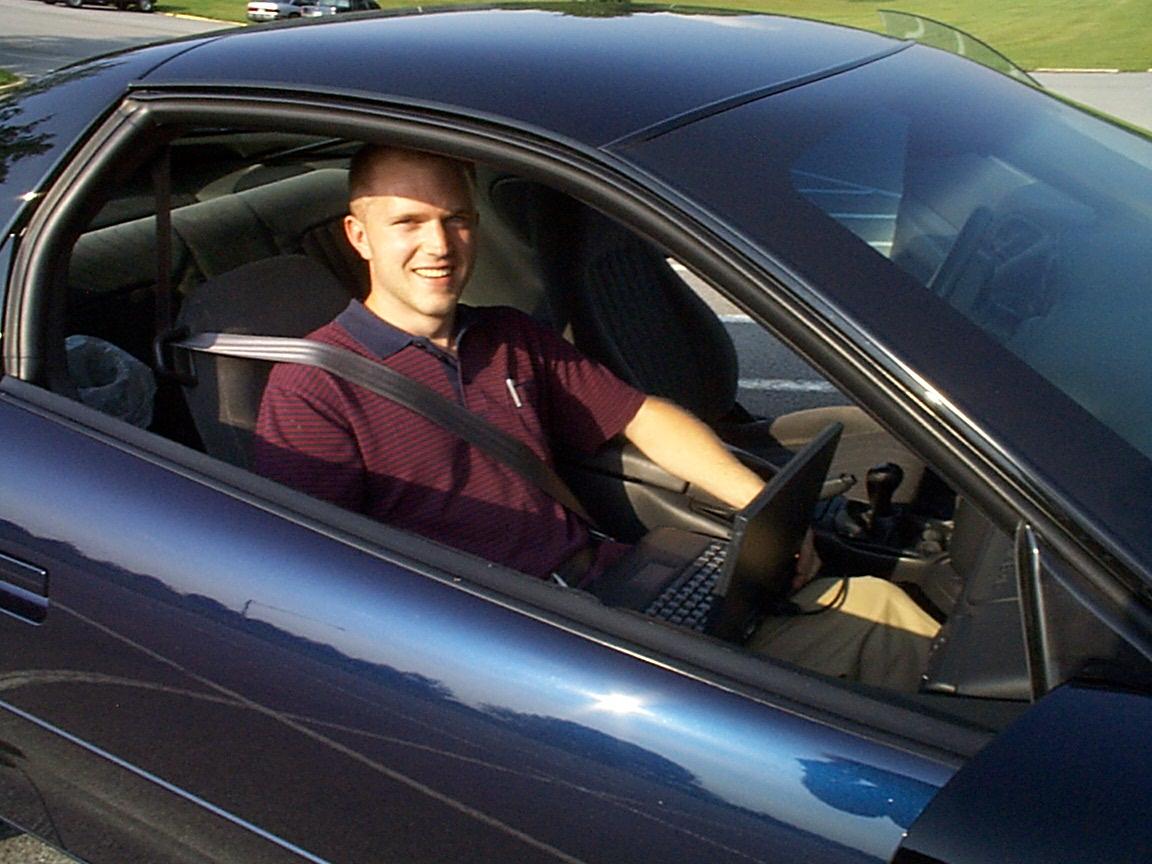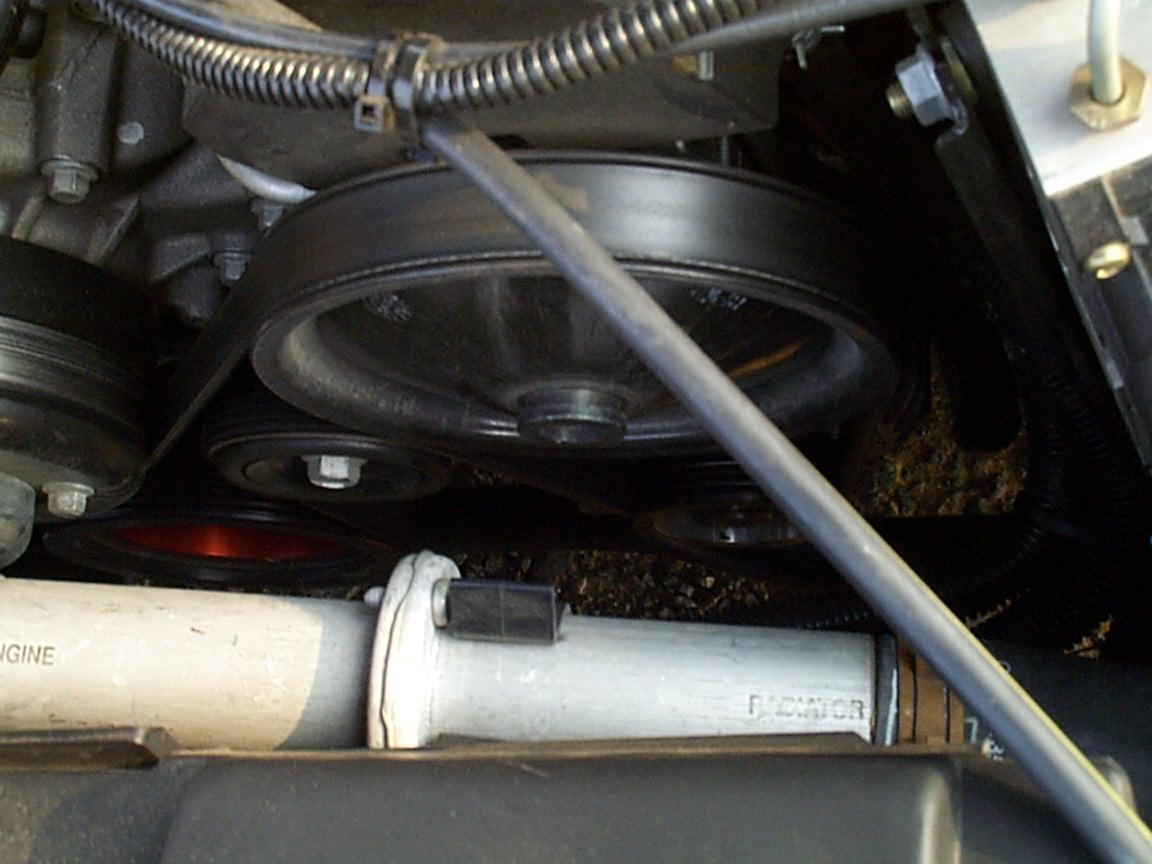
Just another day on the job
| August 10, 2000 |
Eliminating Knock
Retard
Time to cool things off a bit more
Last week we determined that bad gasoline was not the cause of our knock retard problem. This is exactly the scenario that problem stops 90% of the people who tinker on their car from taking on a problem to eliminate knock retard. It can be discouraging at times, require lots of patience and lot's of testing that usually cannot be completed in one day. However, we are in the 10% and plan on finding out the culprit and placing "it" under arrest! Yeah, we will read "it" its rights because Jack is an officer of the law! :-)
 |
|
Just another day on the job |
After having a few days to look back on the test and Auto Tap logs, Jack had to make a decision on the next move. Jack decided that he would replace his 180 °F thermostat with a 160 °F thermostat. His reasoning behind the move to a cooler thermostat than his already cool thermostat was his under drive pullies. The under-drive pullies cause the water pump to move at a slower rate. That seems like the most likely cause for the engine coolant temperature to be so high (200 °F minimum). Even with the cooling fans reprogrammed using the Hypertech Power Programmer III (HPP3) we are seeing engine coolant temperatures that are too high while driving at highway speeds. Jack believes that the 160 °F thermostat in conjunction with the HPP3 (reprogramming the cooling fans to turn on at 160 °F), will allow more flow and step in a little earlier to keep the temperatures down a few more degrees. It is a good hypothesis and made for an interesting afternoon of testing.
Once again we found ourselves logging the conditions using Auto Tap before any Auto Tap logs were taken. The engine coolant temperature was between 183 °F and 190 °F. Intake air temperature (IAT) was all over the place. The IAT mysteriously rising and falling made for a separate article all on its own. The day was hot as the devil and more muggy than the previous test date. However the coolant temperature had dropped dramatically. Great!
I had an old Auto Tap log comment file hidden in the Install University library. The comment file was taken from a night of racing at the drag strip several weeks earlier. The environment conditions were close to the same and luckily, I had Jacks coolant temp typed in. It turned out that Jack's car coolant temperature went unchanged after the 180 °F thermostat install. His coolant temperatures were almost identical with his stock thermostat installed. Wow, I guess that proves Jack's theory correct when concerning the water pump moving at a slower rate with the under drive pullies installed.
| Auto Tap Run #1 Excel 2000 |
We did not waste anytime starting the test. We made our first test run and guess what we experienced. As soon as 4,000 rpm's were reached it was like someone was beating the knock sensors with a baseball bat. The knock retard averaged 3.34 degrees with the rpms over 4,000. This is not any better than last time.
 |
|
Get a look at the balancer and alternator pullies |
We were disappointed that this was still the case. We decided that the next test would be made in fourth (4th) gear. This way we could watch the rpms rise slower and we could determine a relatively close point at which the knock retard shows its ugly face. The coolant temp and IAT were logged during the run. The coolant temp was 185 °F and the IAT was around 93 °F. The IAT had dropped dramatically after we had the car moving for a few miles. At 3,935 rpms the knock retard column went to 3 degrees. The knock retard continued all the way to 4,760 rpms hanging around at 3.9 degrees until Jack let off the gas.
One thing did remain constant and that was I could still hear audible pinging coming from Jack's car. This is not caused by the installation of pullies. An out-of-balance pulley would cause vibrations that would show up as knock retard, not audible pinging.
This week rules out the coolant temperature as a possible cause of Jack's knock retard problem. After a lot of discussion Jack was still undecided about removing the Whisper under drive pullies. He has a decision to make before the next test and it should be interesting to see what he decides.
| Author: Eric
Barger Editor: Kelly Barger Photography: Eric Barger & Jack Mansfield |
- Eric Barger
![]()
Web Author: Eric Barger help@installuniversity.com
Copyright © 1999 - 2002 Eric Barger. All rights reserved.
Revised: June 07, 2007.